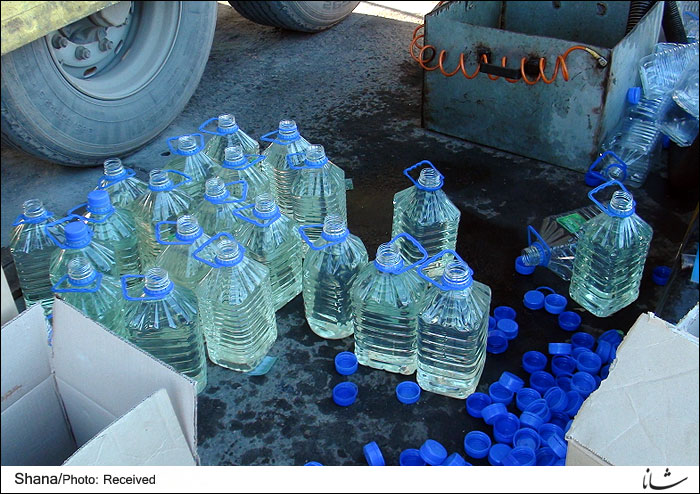International Monetary Fund (IMF) has estimated that the total energy subsidies in the world will be at 5.3 trillion dollars in 2015, an equivalent of 6.5 percent of gross domestic product (GDP) of all countries around the world. IMP has also said that allocating subsidies to energy consumption has caused health problems as well as pollution.
As World Health Organization (WHO) has said, this huge amount of energy subsidy probably goes beyond the costs paid worldwide for health and treatment (6 percent of GDP) in 2013.
In Iran, the parliament passed a law in 2010 to reform and remove subsidies step by step. Under the law, the government has to raise the price of energy carriers and allocate the resulting resources to welfare, social security and economic development.
It’s noteworthy to remember that low level of productivity in Iran and not caring about energy consumption standards are among the main reasons behind energy intensity in the country. Sharp fall in the value of the national currency which occurred during the closing years of the previous administration was the other reason that widened the gap between energy prices in Iran and other countries.
The commercial price of gasoline and gasoil is more and less the same all over the world but the prices being paid by final consumers in each country reflects to a great extent the policy of individual countries at national levels.
In some countries including in European countries, high taxes are being levied on fuel while in some countries like Iran, Venezuela and Saudi Arabia the governments pay high subsidies for fuel consumption.
Pricing gasoline and gasoil in each country and region depends on various factors including the price of crude oil in world markets, processing and distribution expenses, domestic demand, national currency value, taxes and availability of fuel. In developed countries, people pay the highest rates for gasoline and gasoil and this means higher revenues through imposing taxes on fuel.
For example in 2012 the price of crude oil, refining, taxes and distribution, and marketing have made up respectively 62 percent, 12 percent, 12 percent and 14 percent of the final price of each gallon of gasoline in the U.S.
Meanwhile, taxes have made up 72 percent of the price of a liter of gasoline in Turkey, 62 percent in Germany, 57 percent in Italy, 60 percent in Japan, 25 percent in Canada and 12 percent in the U.S.
In India, taxes make up half of the selling price of gasoline at gas stations. Indians pay about 50 percent of the price of gasoline as tax revenues which include taxes collected by central government (24 to 26 percent) as well as different states of the country.
While some countries levy taxes on fuel as a source of meeting budget income, some other countries pay subsidy to their citizens for consuming gasoline and other oil products.
Paying fuel subsidies, mainly in oil exporting countries, brings down transport costs and subsequently the price of goods but at the same time lowers fuel consumption productivity, encourages fuel smuggling and increases energy intensity.
Low level of fuel prices in Iran and paying energy subsidies not only cost the government 480 trillion rials a year but inflicts irreversible environmental damages while intensifying fuel smuggling.
The gap between gasoline and gasoil prices in Iran and its neighbouring countries is one of the main reasons behind fuel smuggling to countries like Iraq and Afghanistan that creates increasing difficulties for the government.
Now let’s have a look at fuel prices in Iran and other countries which in itself make many things clear.
While each liter of gasoline and gasoil in Iran, after raising fuel prices on 25th May 2015, stands at 30 cents and 18 cents respectively, they are traded at 63 cents and 62 cents respectively in Iraq which means smuggling fuel to the neighbouring country is very profitable and smugglers could earn 33 and 44 cents in exchange for smuggling each liter of fuel with huge monthly incomes.
The same is true when consumers pay 1.81 dollars for each liter of gasoline and 1.54 dollars for gasoil in Turkey which implies smugglers earn 1.51 dollars and 1.36 dollars in exchange for smuggling just one liter of the mentioned fuels to Turkey.
Comparing the price of fuel in Iran and Pakistan depicts similar realities related to profitability of smuggling fuel from Iran to the neighbouring country.
Despite existence of laws that impose penalties on smuggling, a very wide gap between fuel prices in Iran and its neighbouring countries tempts fuel smugglers to take the risk to go ahead with their smuggling plans.
Given these facts, it seems adjusting fuel prices and raising it to the levels being traded internationally is the best solution to curb fuel smuggling.
Otherwise the wide gap between prices creates enough incentives for undertaking smuggling and will kill the incentives for job creation especially in border areas and at the same time will facilitate flow of money arising from illegal trade of fuel to the pockets of profiteers instead of going to the treasury.
By Peyman Jonubi


Your Comment